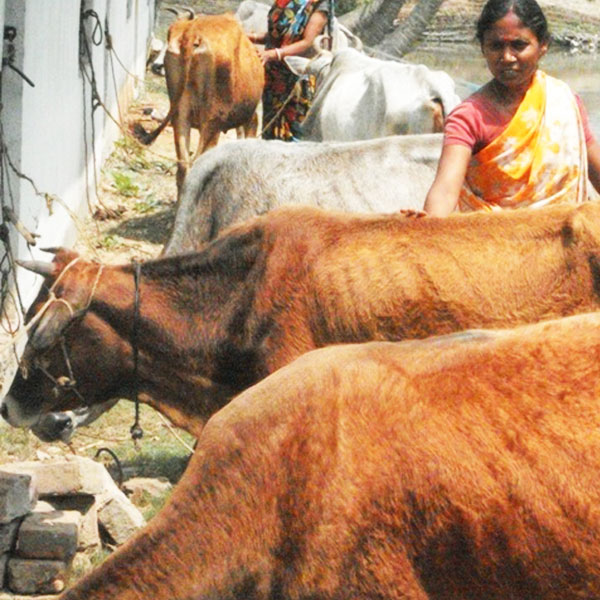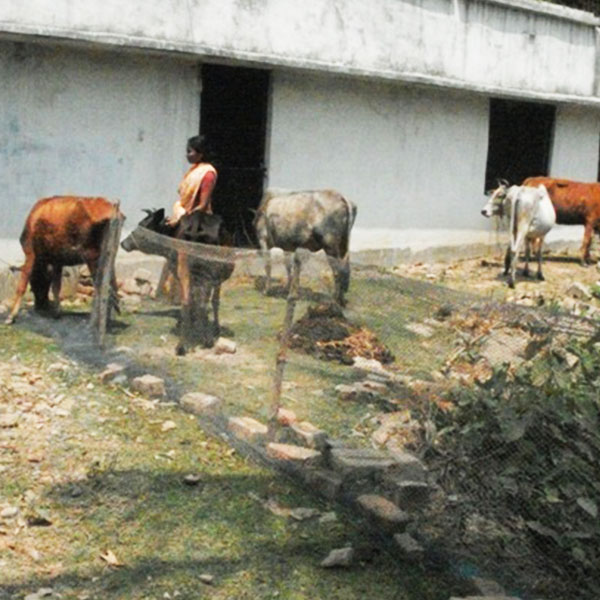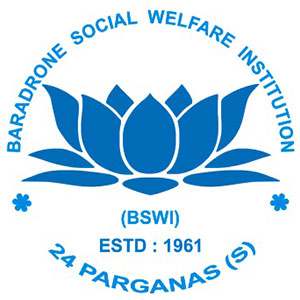LIVESTOCK TRAINING CUM DEMONSTRATION PROGRAM
For self help group members through construction of the building assisted by Japan Consulate Kolkata
Achievements

Direct Beneficiaries
- A total of 3480 women have been trained in the animal rearing along scientific lines during the first year.
- They are earning a palpable income per month and have crossed the defined poverty line.
- Almost 100% of the women have achieved normal nutritional level with sound health conditions.
- All of the women have received credit from BSWI’s Micro-finance program for setting up livestock units.
- The poor rural women have been enabled to gain confidence in scientific rearing of livestock.
- Women’s productive capacity has increased and they are earning good incomes.
- The women have secured maximum access to assets and means of production by way of releasing mortgaged assets, taking bank loan on personal capacities etc.

Indirect Beneficiaries
Quantitative
- 17654 persons (family members of the beneficiaries) have got square meals a day.
- 3264 girls aged 6-14 years have been admitted/re-admitted in formal schools.
- Rate of child labour has been reduced to almost 90% in these families who are regularly attending formal schools.
- 1529 men who used to migrate during the lean seasons have experienced reduced migration to the extent of only 28% and they have joined hands with their women folks in their livestock rearing units for enhanced income. Indebtedness level is gradually coming down in the beneficiaries’ families.
Qualitative
- Personal health, hygiene and sanitation are being maintained by the family members. This has been possible as the beneficiaries could increase their income and meet some health and hygiene costs for their members like food, medicine etc.
- The members are receiving quality food and their health status is improving gradually.
- Many a families have improved their living conditions by repairing and renovating houses.
- Malnutrition-related diseases and preventable childhood/adulthood diseases are reducing gradually. This is visible from the reduced incidence of diseases and slightly better health conditions that has occurred as a result of their increased income and intake of better food.

Effectiveness

Social
- Increased self-employment of women beneficiaries
- Increased nutritional levels of women beneficiaries
- Improved access of the beneficiaries to bank/institutional finance and loans
- Increased knowledge in technical aspects of livestock rearing and maintenance
- Improved confidence levels of the beneficiaries in terms of production, marketing, bargaining and collectivity
- Increasing level of employability of the beneficiaries
- Increased decision-making capacity and acceptance of the beneficiaries in family/community affairs
- Decreasing dependence on the men folks in monetary terms
- Reducing level of atrocities on women
- Increasing capacity of the beneficiaries to participate in community-related decision-making processes
Positive Changes

Increased self-employment of women beneficiaries
- Increased nutritional levels of women beneficiaries
- Improved access of the beneficiaries to bank/institutional finance and loans
- Increased knowledge in technical aspects of livestock rearing and maintenance
- Improved confidence levels of the beneficiaries in terms of production, marketing, bargaining and collectivity
- Increasing level of employability of the beneficiaries
- Increased decision-making capacity and acceptance of the beneficiaries in family/community affairs
- Decreasing dependence on the men folks in monetary terms
- Reducing level of atrocities on women
- Increasing capacity of the beneficiaries to participate in community-related decision-making processes


Financial Sustainability
It is obvious from the village-based statement of microfinance that the SHG movement has gained a momentum under the active guidance of BSWI and it is progressing fast. As it progresses, more SHGs are formed by the village women and more they accumulate savings, the more there would be need for investing in the credit programs. So, credit would not be the factor for the women who would be trained and like to devote themselves in the livestock rearing activities.
Credit from financial institutions and credit from SHG funds are being arranged for the trained members (we have already experienced such lending programs receiving credit from SIDBI, RMK and Allahabad Bank)
The program is not charity based – the working capital of the economic units is being given as loan to the beneficiaries that they are repaying from their surpluses. This amount is being revolved / re- used for new batches for providing them working capital loan for such economic activities
A portion of the gross surplus (only 10% from the surplus of the central livestock units) is being set apart for meeting the recurring costs of the program.
